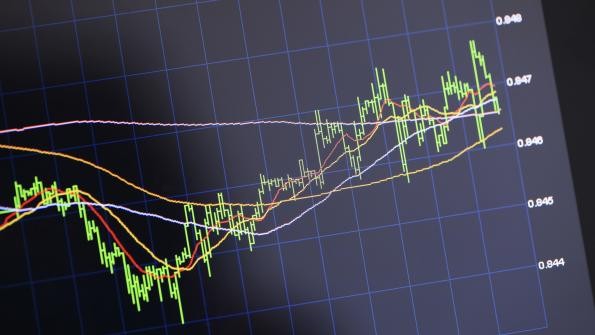Tossing the Coi or Deflation
Post on: 22 Октябрь, 2015 No Comment

Advertisement
There’s a great divide in investor thinking nowadays. Some, watching the liquidity poured into the banking system by Federal Reserve and Treasury, fear an inflationary balloon. Others, mindful of the cascade of assets wanting for buyers, worry more about deflation.
There is a middling course, naturally, but betting on that outcome means a side wager on government dexterity at managing the economy — a long shot in many investors’ minds. So, what are the odds of an inflationary spiral? How likely are we to slip on a deflationary down slope? And what are the investment implications for each scenario?
Defining Inflation
Any bettor must first understand the nature of his wager. Just what do we mean when we say “inflation”? Modern-day notions of inflation generally pivot on increases in aggregate demand in the absence of countervailing upticks in supply. The condition is often described as “too many dollars chasing too few goods” and is, in many investors’ minds, reflected in a rapidly rising Consumer Price Index. CPI tracks the cost of a basket of goods and services paid by urban consumers. It’s not a bad way to measure inflation, but it does have limitations, not the least of which is the infrequency of its data points. CPI is updated monthly; it’s dicey business, statistically, to describe trends and gauge probabilities with an indicator that spits out only 12 data points a year.
To make more reliable forecasts, a more robust measure of inflation is needed. For that, we can harken back to that old saw about “too many dollars.” Originally, inflation referred to the proliferation of coinage/currency without a concomitant increase in assets — gold or silver — to back it.
A monetary inflation index (the HAI Monetary Inflation Index is updated daily at www.HardAssetsInvestor.com/brads-desktop.html ) can be derived by calculating the difference between gold’s appreciation rate in dollars versus its euro-denominated gains. With January 1999 — the introduction date of the euro — set as a base, the benchmark’s value at 2009’s year-end reflects a compound average annual inflation rate of 4 percent. CPI grew at a 2.5 percent annual rate over the same period.
The dissonance in the two rates stems mainly from expectations. Investors are rightly concerned about all that liquidity poured into the economy from the Federal Reserve’s helicopters over the past 18 months. But that “too many dollars chasing too few goods” business just hasn’t played out, despite the Fed’s open cash spigot. The reason? While there are plenty of dollars loaded into the system, there’s also a surfeit of goods. Ergo, core inflation — CPI inflation — has remained remarkably stable.
Another reason for the latency of CPI inflation is velocity. The money the Fed’s pumped into the banking system isn’t turning over fast enough to kindle a price inflation fire. The Fed’s efforts have really added to reserves rather than stimulating lending.
Sooner or later, however, those excess reserves will have to be drained. When the Fed’s accommodation is withdrawn, consumer prices could very well escalate.
With the foregoing in mind, the monetary inflation index might be thought of as a better benchmark for investors, especially those in the accumulation phase, since it takes into account precious metals and foreign currency, which are used as portfolio diversifiers. CPI may be more useful for retirees who are buying groceries with their investment proceeds.
The Case for Deflation
If we look at inflation charts, we can see that there have been periods of disinflation — that is, times in which the inflation rate has slowed — as well as wholesale deflationary declines. “Too few dollars and too many goods” may be used to describe the drop in aggregate demand that coincides with deflation.
We’ve seen the shuttering of productive capacity in the current recession as manufacturers — voluntarily and through bankruptcy — have retreated from the economy. The resulting job losses figure prominently in the deflation argument. Inflation’s more likely to be sustainable if wages are rising.
Armed with the monetary inflation index’s many data points, we can apply some probability theory to get a handle on inflation’s prospects. The monetary inflation index’s high-water mark was reached at 195.88 in December 2009 when gold was trading for $1,218 an ounce and euros could be bought for $1.51. Inflation’s three-year low tide came at 116.40 nearly a year earlier with gold worth $715 an ounce and euros at $1.25. With that range, a standard deviation is 20.86 points or 13.8 percent of the period’s mean index level (151.40). Using the index’s recent volatility, we can set the odds for a one-standard deviation excursion from its current level (158.39) over various time horizons.
Short term (365 days: February 2011)
There’s a roughly two-thirds probability of a standard deviation move to the upside — an inflationary turn — within the next year. We’re, in fact, 2.5 times more likely to end up embroiled in inflation rather than deflation.
Intermediate term (730 days: February 2012)

Doubling the time horizon increases the chances of a breakout move with a concomitant increase in the likelihood of deflation. Note that at the end of two years, inflation’s three times more likely than deflation.
Long term (1,000 days: November 2012)
With a 1,000-day horizon, the odds of an upside breakout improve to better than 4-in-5; a one-standard deviation move sometime during the period then becomes more likely than stasis.
Overall, inflation becomes an increasingly likely occurrence over a three-year horizon. Keep in mind that this is speculation based upon extant market conditions and political/economic circumstances. The projections above reflect an expectation that monetary inflation’s most recent three-year history essentially repeats itself. If the index’s course reverts to its longer-term pattern, the odds change significantly. Consider, for example, the 1,000-day odds when the long-term pattern is used as a template. The odds for a deflationary move improve at the expense of the probability for an inflationary breakout.
We should also remember that the farther we look out to the horizon, the less clarity we have. Unforeseen developments can always intercede to alter the monetary inflation rate.
Investment Options
Your personal expectations for inflation or deflation will certainly color your investment outlook. To tweak investment portfolios for an increase in inflation, it’s probably best to draw on the inflationary tap root of commodities. Carving out an allocation from your equity portfolio for a gold grantor trust, such as the SPDR Gold Shares Trust (NYSE Arca: GLD) together with the addition of inflation-protected notes proxied by the iShares Barclays Capital TIPS Bond Fund (NYSE Arca: TIP) to the fixed income side should take advantage of inflationary pushes of the monetary or CPI sort. Alternatively, a broad-based commodity index tracker such as the GreenHaven Continuous Commodity Index Fund (NYSE Arca: GCC) can replace a portion of a portfolio’s equity allocation, with the understanding that contango — a pricing feature of the futures term structure in which nearby delivery months are priced at a discount to past months — can minimize fund returns.
An equities carve-out for high-dividend preferred shares represented by the iShares S&P U.S. Preferred Stock Index Fund (NYSE Arca: PFF) or utilities tracked by the Utilities Select Sector SPDR (NYSE Arca: XLU) would be a practical way to prepare for deflation. Shifting to shorter durations on the fixed income side could be accomplished by making room for a dollop of the iShares Barclays Capital 1-3 Year Credit Fund (NYSE Arca: CSJ) as well.
Nobody knows for certain if the inflation coin toss will come up heads or tails, but now at least you have a statistical structure — and some potential portfolio adjustments — that are better than guesswork and prayer.














